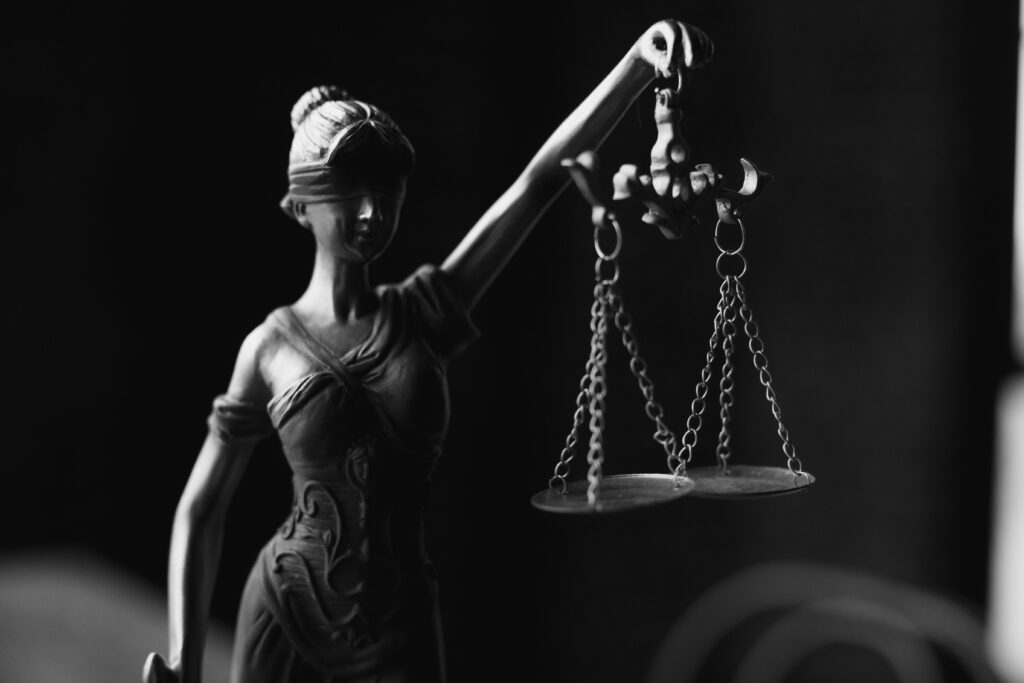Published on 27th June 2025
Authored By: K. Sai Saketh
NMIMS Bangalore
Introduction
The K.M. Nanavati v. State of Maharashtra case stands as one of the most influential criminal cases in Indian legal history. This 1959 case involving Naval Commander Kawas Manekshaw Nanavati, who was tried for the murder of his wife’s paramour, Prem Bhagwandas Ahuja, not only captured unprecedented public attention but also led to significant legal changes in India.
Background and Facts of the Case
Commander Kawas Manekshaw Nanavati, born in May 1925, was at once accepted as the most highly respected officer in the Indian Navy; he settled in Bombay with his English-born wife Sylvia (formerly King) and their three children-two sons and a daughter. Being posted to distant places on long spells, the officer would find Sylvia in an increasing affair with Prem Bhagwandas Ahuja, a businessman and a close family friend, due to her husband’s absence.
The event leading to the case happened on April 29, 1959. Nanavati saw strange behavior in his wife and confronted her directly. Sylvia accepted her extra-marital affair with Prem Ahuja. Nanavati dropped his wife and his three children at a cinema theatre and proceeded to his ship, where he claimed, he was going to Ahmednagar for “self-protection” on a drive, only to get his service revolver and six cartridges, after finding out that his wife was cheating on him.
Then Nanavati drove to Ahuja’s home. There, he was taken to be greeted by one servant who led him straight to the master bedroom and shut the door behind him. Whatever happened between the two men in that bedroom became the point of contention in the case. According to one version, Nanavati put the question to Ahuja if he was going to marry Sylvia and assume responsibility for her children. Hearing Ahuja’s typically callous remark-“Am I to marry every woman I sleep with?”—a” quarrel ensued, and Nanavati allegedly shot Ahuja.
Nanavati droves straight into the police station after shooting Ahuja and proceeded to turn himself in. This act of self-surrender will surely be one of the main points of argument in law for the case.
Legal Proceedings
The case underwent a complex legal journey through India’s three-tiered judicial system, becoming a landmark in Indian legal history.
Sessions Court Trial
Initially charged under Section 302 of the Indian Penal Code for the murder of Prem Ahuja, the trial of Nanavati took place before a jury in the Sessions Court, as per the then existing system for trials in serious criminal cases. This hotly debated decision, which later came to haunt the jury, brought back a verdict of “not guilty” by an overwhelming majority of 8-1. Maintaining that the jury’s decision was “perverse” and contrary to the evidence before it, the Sessions Judge accepted the verdict but sent the case to the Bombay High Court under Section 307 of the CrPC.
Review at the High Court
The bench of the Bombay High Court consisting of Justice P.B. Gajendragadkar, Justice D.K. Chainani, and Justice V.M. Tarkunde evaluated the evidence to the highest degree. In a judgment reversing the jury’s verdict, the High Court convicted Nanavati under IPC Sections 302 (murder) and 304 Part I (culpable homicide not amounting to murder), sentencing him to life imprisonment. The court found that Nanavati had intentionally murdered Ahuja and that there was no grave and sudden provocation that would lead to culpable homicide.
The High Court also noted that the jury’s decision had been influenced by an excessive amount of media coverage and public sympathy for Nanavati, rather than being based on a disinterested assessment of the evidence.
Appeal to the Supreme Court
Feeling aggrieved by the judgment of the High Court, an appeal was made by Nanavati to the Supreme Court of India. A bench of three justices presided over the appeal: Justice K. Subba Rao, Justice S.K. Das, and Justice Raghubar Dayal. In fine analyses, the Supreme Court stood by the conviction and the sentence imposed by the High Court, as it found the deed committed by Nanavati to be with premeditation and malice aforethought.
Key Legal Issues
Grave and Sudden Provocation
It concerned the important question of law on interpretation and enforcement of the grave and sudden provocation exception under Indian criminal law viz., Exception 1 to Section 300 of the Indian Penal Code. Acceptance of this provision would reduce guilt from murder to culpable homicide not punishable with death.
Jury Trial System
The Nanavati case highlighted significant concerns about the jury system in India. The stark contrast between the jury’s acquittal and the High Court’s subsequent conviction raised questions about the reliability of jury verdicts, especially in high-profile cases where public opinion and media coverage might influence jurors(36).
The case is often erroneously cited as the last jury trial in India, though there were several trials afterward that used juries into the 1960s(1). Nevertheless, it played a crucial role in the government’s decision to abolish the jury system in India(6).
Court Judgments
Sessions Court Verdict
The Sessions Court accepted the jury’s verdict of “not guilty” delivered by an 8-1 majority(3). However, recognizing potential issues with this verdict, the Sessions Judge referred the case to the High Court under Section 307 of the Criminal Procedure Code, which allows for such referral when the judge considers the jury’s verdict to be contrary to the evidence(3).
High Court Judgment
The Bombay High Court set aside the jury’s verdict and convicted Nanavati under Section 302 of the IPC, sentencing him to life imprisonment(1)(2)(3). The High Court’s reasoning differed significantly from the jury’s assessment. They determined that:
- Neither Sylvia’s confession nor any specific occurrence in Ahuja’s bedroom constituted grave and sudden provocation that would reduce the charge from murder to culpable homicide(6).
- Nanavati’s actions showed premeditation rather than a spontaneous reaction to provocation(3). The court characterized the killing as deliberate and cold-blooded(3).
- The jury had been improperly influenced by media coverage and public sympathy for Nanavati, rendering their verdict perverse and unreasonable(3).
- The burden of proof had not been met by Nanavati to establish his defense of accidental shooting(6).
Supreme Court Judgment
The Supreme Court upheld the High Court’s conviction and sentence(3). In its judgment, the Supreme Court made several important determinations:
- The court recognized that Nanavati was concerned about his family even after learning of his wife’s infidelity, which indicated he had maintained his composure rather than losing self-control(6).
- The time interval between Sylvia’s confession and the shooting was sufficient for a reasonable person to cool down and consider their actions(5)(6).
- Any verbal exchange between Nanavati and Ahuja, even if it included offensive remarks about Sylvia, did not constitute provocation grave enough to justify homicide(3)(5).
- Nanavati’s surrender to the police, while commendable, did not absolve him of guilt for the murder(2). The court viewed this surrender as recognition of the inevitable consequences of his actions rather than genuine remorse(2).
- The court rejected Nanavati’s plea for mercy based on his naval service and family situation(3).
Impact and Significance
The K.M. Nanavati case had profound and far-reaching impacts on the Indian legal system and popular culture:
Legal System Changes
The most significant impact was the abolition of the jury system in India(2)(6). The case exposed the vulnerabilities of jury trials to media influence and public sentiment, especially in high-profile cases. Following this case, the government took steps to eliminate jury trials in India, transitioning to bench trials conducted solely by judges.
The case also established important precedents regarding the interpretation of “grave and sudden provocation” under Exception 1 to Section 300 of the IPC (4). It has since been cited in numerous criminal cases, particularly those involving crimes of passion and claims of provocation(2).
Aftermath for Nanavati
Though initially sentenced to life imprisonment, Nanavati was eventually pardoned by Vijayalakshmi Pandit, the then Governor of Maharashtra and sister of Prime Minister Jawaharlal Nehru(1). This clemency, coming after Nanavati had served some time in prison, added another layer to the already complex narrative of justice in this case.
Conclusion
- M. Nanavati v. State of Maharashtra was a new landmark in Indian legal history. However, the case created stirrings not only in its sensational aspects but also in important contributions in criminal-law corpus in India in terms of serious and sudden provocation per se, testing murder cases about premeditation, and allocation of burdens in criminal defenses.
This case has traveled the length and breadth of the Indian judiciary: risky jury acquittal to the didactic case where the Supreme Court upheld the conviction of Nanavati, showing checks and balances within that legal framework. It highlighted the role of higher courts in restraining processes of misuse of authority.
The most powerful impetus to this change was the case which resulted in the disappearance of jury trials in India and has altered the procedure of criminal trials in India. To be fair, it also involved a wider appraisal that in the Indian scenario bench trials by well-trained judges would secure better justice than jury trials swayed by media and public opinion.
Nanavati’s echoes continue to reverberate even more than sixty years after the case, and continue to excite the imagination of jurists, students, and the common man. That given interest is not only because of the underlying drama, but also for its relevance today, when it has an indelible imprint in the story of modern change in Indian criminal law and procedure, making it an excellent case study in understanding contemporary Indian jurisprudence.
References
- Wikipedia contributors, K. M. Nanavati v. State of Maharashtra, Wikipedia, https://en.wikipedia.org/wiki/K._M._Nanavati_v._State_of_Maharashtra.
- Legal Article on the Case Law: K. M. Nanavati vs State of Maharashtra, Lawful Legal, https://lawfullegal.in/legal-article-on-the-case-law-k-m-nanavati-vs-state-of-maharashtra/.
- M. Nanavati Case Summary, ILEDU, https://book.iledu.in/wp-content/uploads/2023/09/72.pdf.
- Nanavati Case, Live Law Exams, https://livelawexams.com/nanavati-case/.
- M. Nanavati v. The State of Maharashtra: Case Analysis, iPleaders, https://blog.ipleaders.in/k-m-nanavati-v-the-state-of-maharashtra-case-analysis/.
- Case Analysis: K. M. Nanavati v. The State of Maharashtra, LawBhoomi, https://lawbhoomi.com/case-analysis-k-m-nanavati-v-the-state-of-maharashtra/.
- M. Nanavati vs State of Maharashtra, Testbook, https://testbook.com/landmark-judgements/km-nanavati-vs-state-of-maharashtra.
- Case Summary: K. M. Nanavati vs State of Maharashtra (1959), LawKranti, https://lawkranti.com/d/100-case-summery-k-m-nanavati-vs-state-of-maharashtra-1959.
- M. Nanavati v. State of Maharashtra, Indian Kanoon, https://indiankanoon.org/doc/1596139/.
- The Nanavati Case: Unraveling Justice and Society in 1950s India, Legal Service India, https://legalserviceindia.com/legal/article-16913-the-nanavati-case-unraveling-justice-and-society-in-1950s-india.html.
- Nanavati v. Cape Reg’l Med. Ctr., Studicata, https://studicata.com/case-brief/case/nanavati-v-cape-reg-l-med-ctr.
- The Nanavati Case: Unraveling Justice and Society in 1950s India, Legal Service India, https://www.legalserviceindia.com/legal/article-16913-the-nanavati-case-unraveling-justice-and-society-in-1950s-india.html.
- What Is K. M. Nanavati Case, Business Standard, https://www.business-standard.com/about/what-is-k-m-nanavati-case.
- Case Analysis: K. M. Nanavati vs State of Maharashtra, Law Daily, https://www.lawdaily.cslr.in/2022/07/case-analysis-km-nanavati-vs-state-of.html.
- Manik G., #LegalHistory: Nanavati Case and the Indian Judiciary, LinkedIn (Apr. 2024), https://www.linkedin.com/posts/manikg1_legalhistory-nanavaticase-indianjudiciary-activity-7200790340469940224-NMzT.
- Landmark Judgement Brief: K. M. Nanavati v. State of Maharashtra, Into Legal World, https://www.intolegalworld.com/article?title=landmark-judgement-brief-k-m-nanavati-v-state-of-maharashtra.
- Case Analysis: K. M. Nanavati v. State of Maharashtra (1961), Legal Service India, https://www.legalserviceindia.com/legal/article-9188-case-analysis-km-nanavati-v-s-state-of-maharashtra-1961-.html.
- Rajalakshmi Selvam, Abolition of Jury Trial: The Nanavati Case, LinkedIn, https://www.linkedin.com/pulse/abolition-jury-trial-nanavati-case-rajalakshmi-selvam-9zn2c.
- M. Nanavati v. State of Maharashtra: Case Analysis, Legal Upanishad, https://legalupanishad.com/k-m-nanavati-v-state-of-maharashtra-case-analysis/.
- M. Nanavati v. State of Maharashtra, Legal Services India, https://www.legalservicesindia.com/article/1347/K.M.Nanavati-V.-State-of-Maharashtra.html.




